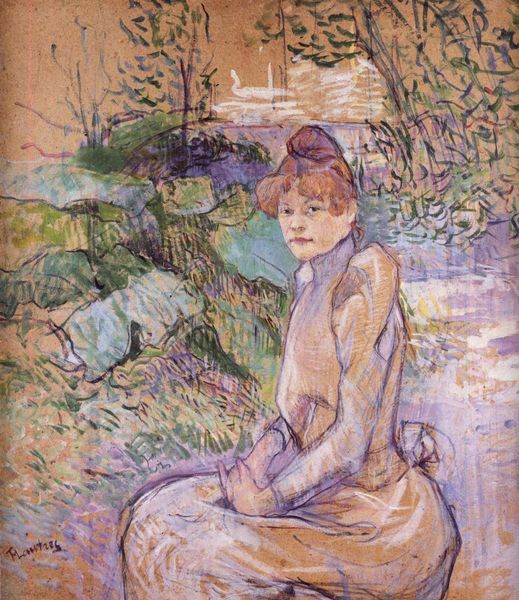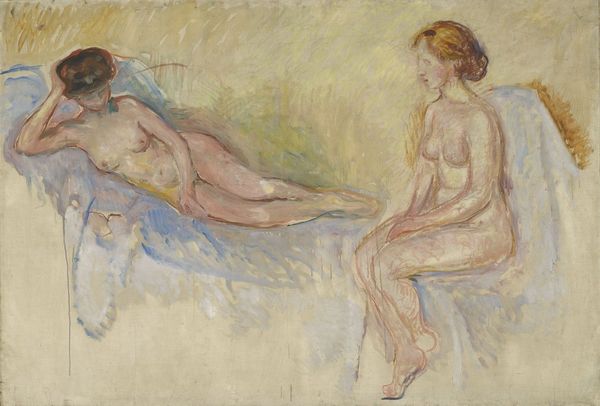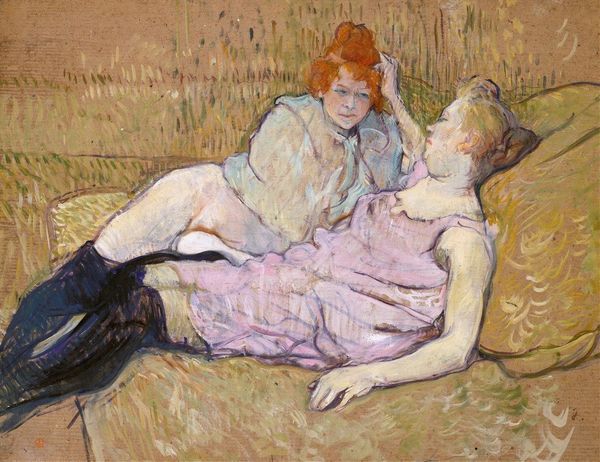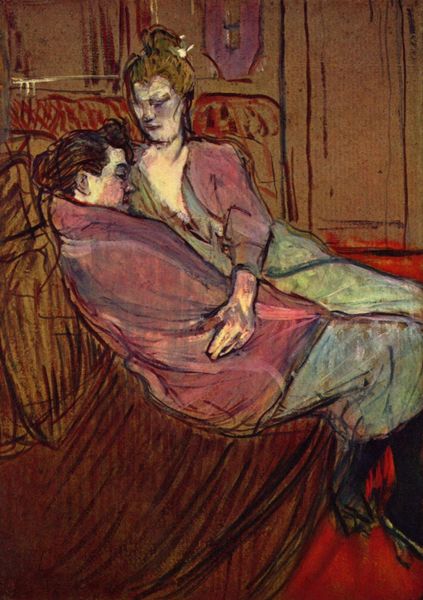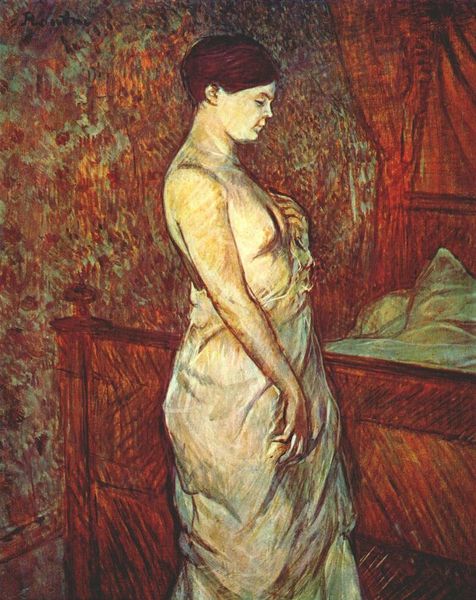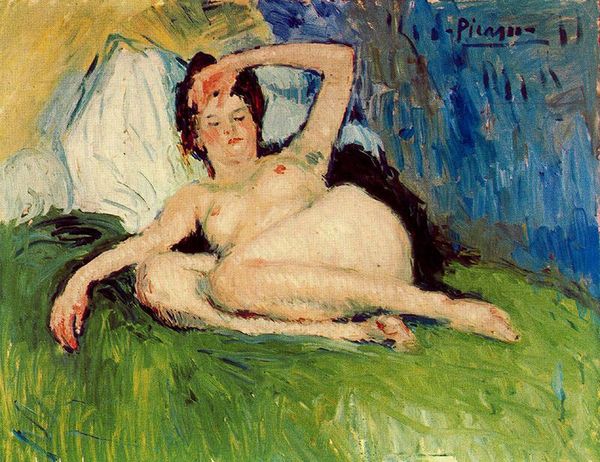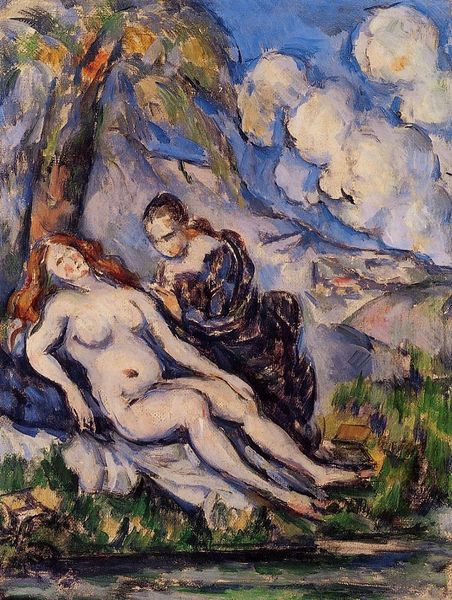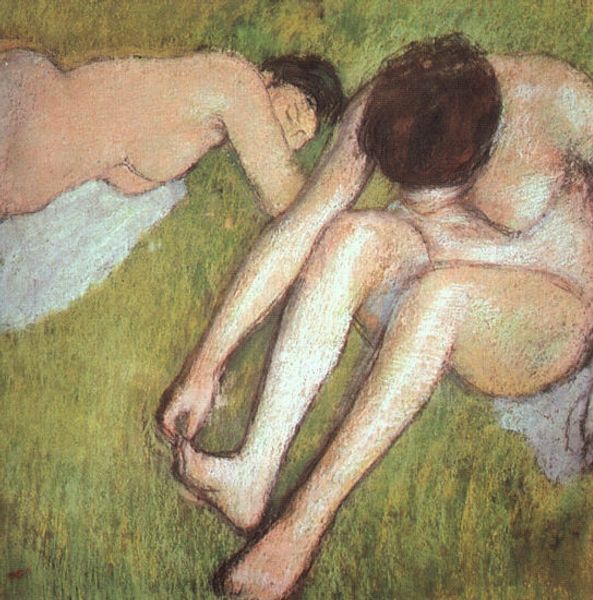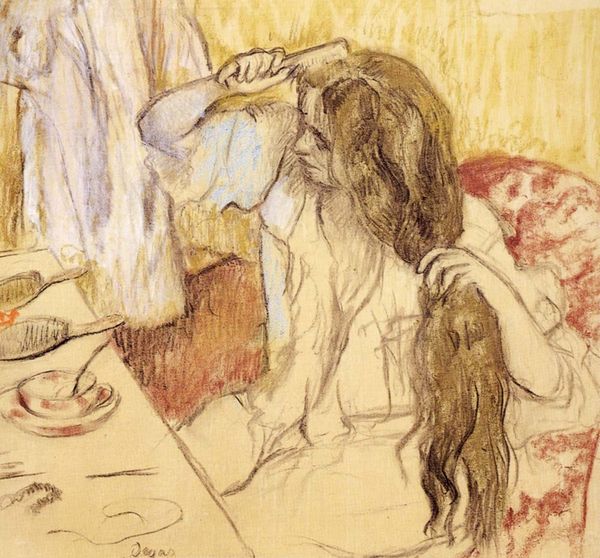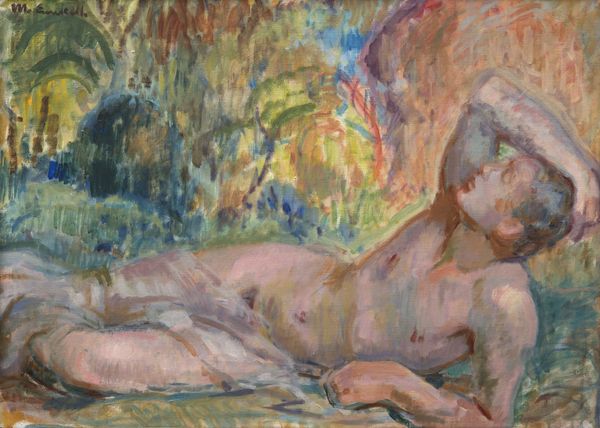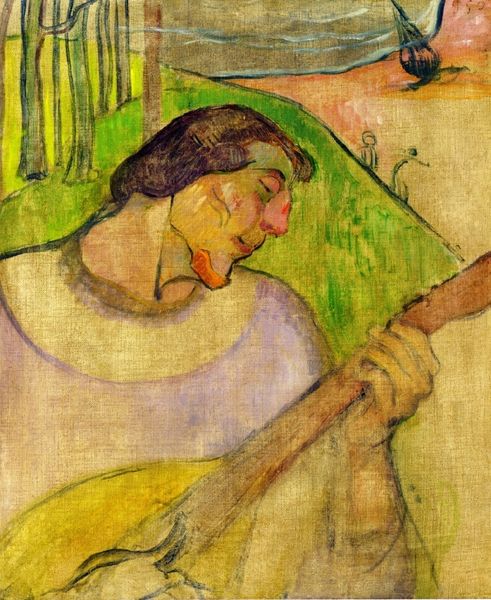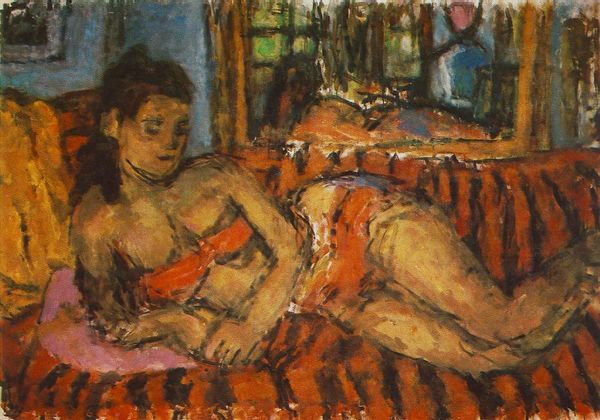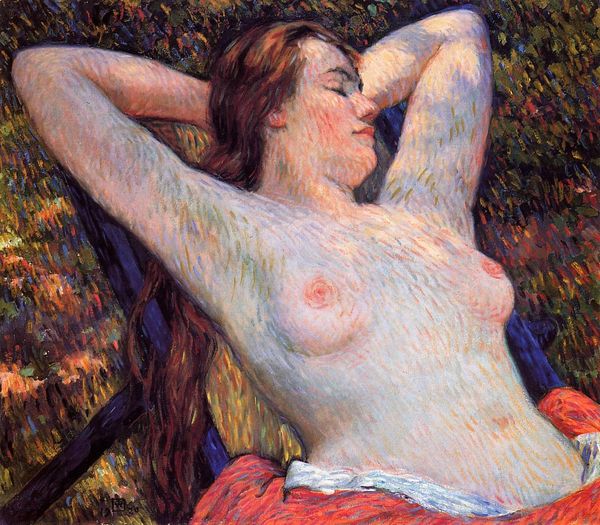
#
portrait
#
abstract expressionism
#
abstract painting
#
impressionist landscape
#
possibly oil pastel
#
oil painting
#
fluid art
#
neo expressionist
#
acrylic on canvas
#
underpainting
#
female-portraits
#
expressionist
Copyright: Public domain
Curator: Up next we have "Two Friends," painted around 1895 by Henri de Toulouse-Lautrec, held in the E.G. Bührle Foundation in Zürich. What catches your eye initially? Editor: The raw, almost unfinished quality. It feels like a snapshot, an intimate glimpse. The stark contrast of the cool blues and the warm reds creates an interesting tension. Curator: It is fascinating how Toulouse-Lautrec uses very thin layers of paint, allowing the underlying cardboard to become part of the image, impacting color and texture. One might even examine the provenance of the cardboard itself and where it came from. What stories could that support tell, literally? Editor: The lines are so deliberate, even economical, perfectly capturing the angle of the heads and limbs. Look how he's suggested shadow and form with just a few strokes—a true master of economy. Curator: He's showing us, really, how these women's lives and bodies are industrialized. This image depicts the relationship between two prostitutes, and Lautrec painted this while spending time documenting the daily routines of the prostitutes in Montmartre. We're confronted with not just their relationship, but with its very means of production and distribution. Editor: Absolutely, and you see that play out in the composition too—the horizontal body, bisected by the red blanket, meets the vertical gaze of the second woman in a stark contrast. There is such intentional use of diagonal movement here to emphasize depth. The lines of their eyes connect, a really strong visual connection! Curator: Do you believe that he is attempting to give these women a new meaning through this form? That the rough, almost careless depiction provides new insight? Editor: Well, through those formal elements—the colors, lines, and composition—Toulouse-Lautrec invites us to really *see* these women, to recognize their humanity beyond the constraints of their profession. There's a palpable empathy in those fleeting lines. Curator: This empathy is striking considering that their lives were completely commodified by capitalist means. I do agree, however, that there is definitely something to the material impact of its presence. Editor: Right, art creates an intimacy. To bring it all together, I am struck again by the red blanket and how much passion it creates with simple strokes of paint. What is your ultimate takeaway here? Curator: To think critically about what supports artmaking itself; what materials and resources, physical and societal, make art possible. Thanks for illuminating some of its beauty, though.
Comments
No comments
Be the first to comment and join the conversation on the ultimate creative platform.
